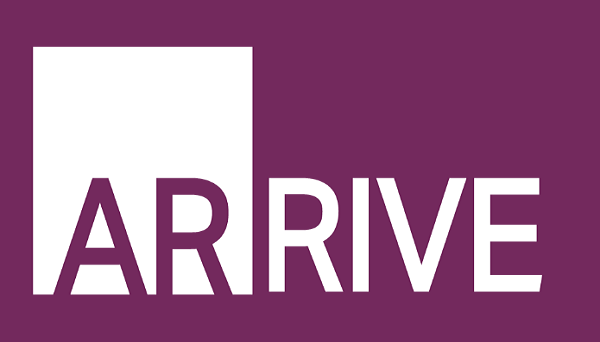
For BMC Series journals, it is important that the research we consider and publish can be utilised and is trusted. We have a responsibility to ensure that the welfare of animals has been considered and that the harm involved is justified by the expected benefit of the research. To support us, we utilise tools such as the Animal research: reporting In Vivo Experiments (ARRIVE) guidelines to evaluate the integrity and soundness of submissions that report on animal experiments.
In 2010, the NC3Rs developed the ARRIVE guidelines; a 20 point checklist covering measures associated with bias (randomization, blinding, sample size calculation, data handling) with the aim to improving the quality of both scientific research design and reporting of animal studies. The guidelines prompt authors to provide sufficient detail in their research paper that would allow the reader to assess the methodological rigour of the experiment, determine the reliability of the findings, and to reproduce and build upon the work. Unfortunately, the argument for the success of ARRIVE has been varied since its launch, and despite being widely endorsed by journals, funding bodies and research institutions, the quality of reporting in animal research publications is still far from roubust.
Problems encountered using the ARRIVE 2010 guidelines
As an Editor, I have noticed that authors use the ARRIVE checklist in different ways. Given the inconsistent adoption of ARRIVE by journals, many authors, and editors, are still not aware of these guidelines, or see them as an unnecessary box ticking exercise. This lack of awareness can also affect how authors plan their research where issues related to bias may not have been appropriately considered, and this has a knock-on-effect at the manuscript writing stage. At BMC Veterinary Research, we often receive ARRIVE checklists that are incomplete or don’t correspond to what is reported in the paper. These issues could be related to language barriers or differences in research culture where authors are still not fully aware of the consequences of incomplete reporting. Alternatively, it may be related to the misconception that admitting to non-compliance of an ARRIVE item will disqualify a manuscript from being published. Overall, comparing an ARRIVE 2010 checklist against a manuscript can be an onerous task for editors and reviewers when evaluating the robustness of the methods and results.
comparing an ARRIVE 2010 checklist against a manuscript can be an onerous task
Therefore, in an attempt to improve uptake, an international working group was formed to review the original ARRIVE 2010 guidelines and develop a strategy that would make ARRIVE easier for researchers, editors and reviewers to use. We are pleased to announce that the new ARRIVE 2.0 guidelines have been published today in PLOS Biology and re-published by BMC Veterinary Research.
ARRIVE 2.0 – what has changed?
The overall guidelines have been simplified. Items from the original checklist have been updated and reorganised and are now presented in two categories: the ‘ARRIVE Essential 10’ and ‘Recommended Set’.
The ‘ARRIVE Essential 10’ is a list of key items that authors should address in their manuscript text as a minimum standard and represents best practice. If adhered to, reporting of these items should have the biggest impact on improving the quality and reliability of animal research studies.
The second list of recommendations is designed to provide greater context and background to the study. This includes items such as conflicts of interest, protocol registration, and animal housing and welfare aspects. While not strictly essential, these points will add value to the review process, enhancing the transparency of the study design and reporting.
A useful Explanation and Elaboration (E&E) document has also be made available. This helps to describe each of the ARRIVE 2.0 items in greater context and detail, and includes best practice examples from the published literature.
The ARRIVE 2.0 update joins a host of other ongoing initiatives in an attempt to address factors contributing to poor reproducibility. There is still much work to be done to engage key stakeholders to create a process whereby these standards can be consistently implemented and enforced at the research planning stage, and then hopefully mandated by all journals.

Support provided at BMC Veterinary Research
At BMC Veterinary Research, we encourage all authors to adhere to ARRIVE 2.0 and offer the following services and resources to our authors and readers.
Plan your research
The sooner you adhere to ARRIVE standards the better. We encourage authors to publish their study protocol with us, which is a great opportunity to ensure that your planned study follows ARRIVE 2.0 standards and 3Rs principles. Publishing study protocols help to improve the transparency and reproducibility of animal and veterinary research, in addition to reducing publication bias and post hoc revisions of the study’s objectives and methodologies.
Make writing easier
A copy of the BMC Veterinary Research manuscript template is available for authors to download, which follows our formatting guidelines and includes requests relating to Landis criteria and ARRIVE 2.0 items making it easier for authors to ensure that their reporting is complete.
Available resources
Further information and resources about standards of reporting can be found via the BMC Veterinary Research Instructions for Authors page and in the BMC editorial policies.
Our commitment to reproducible science
We have also recently launched a new section in the journal dedicated to animal ethics, policy and research integrity practices in animal and veterinary science and will publish research and opinion articles on this important topic.
Author support
We have a dedicated editorial board that are happy to support our authors with any queries they may have regarding adherence to ARRIVE 2.0 and reproducible research practice. If you would like further information, please contact me at hayley.henderson@biomedcentral.com
Comments